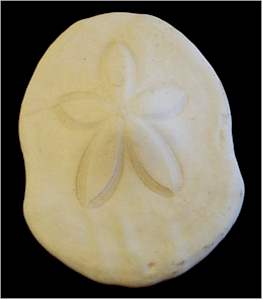Kant and Conniff:
Should We Analyze Inherent Beauty as Aristocrats or Neanderthals?

The standards by which we (humans) have historically
judged art tend to be quite subjective. Arthur Danto pointed out that many
classical art theorists merely developed their particular philosophies as
“disguised endorsements of the kind of art the philosophers approved
of (Freeland 57)”, meaning that historical art theories are actually
reflections of the philosophers’ own tastes, and do not actually reveal
much about the art pieces they are applied to. There are two art theories,
however, which seem to go against the traditional norm and attempt to assess
art objectively based on intrinsic qualities of the art itself.
The first of these is the theory of evolutionary aesthetics, developed by
a variety of philosophers and outlined by Conniff in his article “The
Natural History of Art” (for clarity, it is referred to as ‘Conniff’s
theory’ in this paper, although the ideas in evolutionary aesthetics
are really derived from a variety of theorists). This theory points out that
“ beauty is not just in the eye of the beholder (94)”, but rather,
humans all react to art based in instinctual responses to motifs seen in nature.
For example, a landscape scene which portrays a suitable habitat is instinctively
favorable, whereas a pattern that resembles an animal print will trigger interest.
This seems like a much more objective approach to assessing art. If we all
have the same evolutionary history, then we should all instinctively respond
to stimulating qualities in art in the same way.
Similarly, the art theory proposed by Emmanual Kant also focuses on the intrinsic
qualities of art that do not change from viewer to viewer. By Kant’s
standards, beauty is not a subjective quality to be debated, it is a property
– arrived at by consensus of the intelligencia. Freeland paraphrases
his theory that “we respond to the object’s rightness of design,
which satisfied our imagination and intellect, even though we are not evaluating
the object’s purpose (14)”. Kant puts emphasis on the natural
beauty inherent in an object’s form, and also asserts that we cannot
judge art based upon any consequences we may associate with the subject matter.
In essence, the form of an artistic object demonstrates ‘purposiveness
without a purpose’.
Both theorists point out that we judge art based on its intrinsic qualities.
They disagree, however, in how we judge art based upon perceived consequences.
Kant proposes that we judge art based on the subject matter’s lack of
a practical purpose, whereas Conniff argues that it is the potential purpose
of the subject which most greatly influences how we appreciate art.
The two art theories are most clearly contrasted when applied to images of
flowers, in particular, Georgia O’Keefe’s painting White Rose
with Larkspur. Conniff cites Orians and Heerwagen’s study that humans
prefer images of flowers to be “big and asymmetrical, traits that indicate
greater nectar content (Conniff 98)”. In this case, the viewers are
unconsciously considering the possible benefits they may reap from the flowers
they are viewing. Instinctively, we think objects are beautiful when we think
they may be vital to our survival and ability to reproduce. The large and
voluptuous rose in O’Keefe’s painting seems instinctually appetizing
and thus beautiful. Kant, however, uses the example of a rose as an object
we see as beautiful because it has a certain purposiveness – being beautiful
– without any other purpose that may benefit us in some way. According
to Kant, “a beautiful rose pleases us, but not because we necessarily
want to eat it or even pick it for a flower arrangement (Freeland 11).”
The rose in O’Keefe’s painting should register in our minds as
beautiful simply because of the harmony of its form. He emphasizes that if
we consider possible benefits, we are not adequately judging art.

Fig.1: Georgia
O’Keefe. White Rose with Larkspur. Oil on Canvas.
